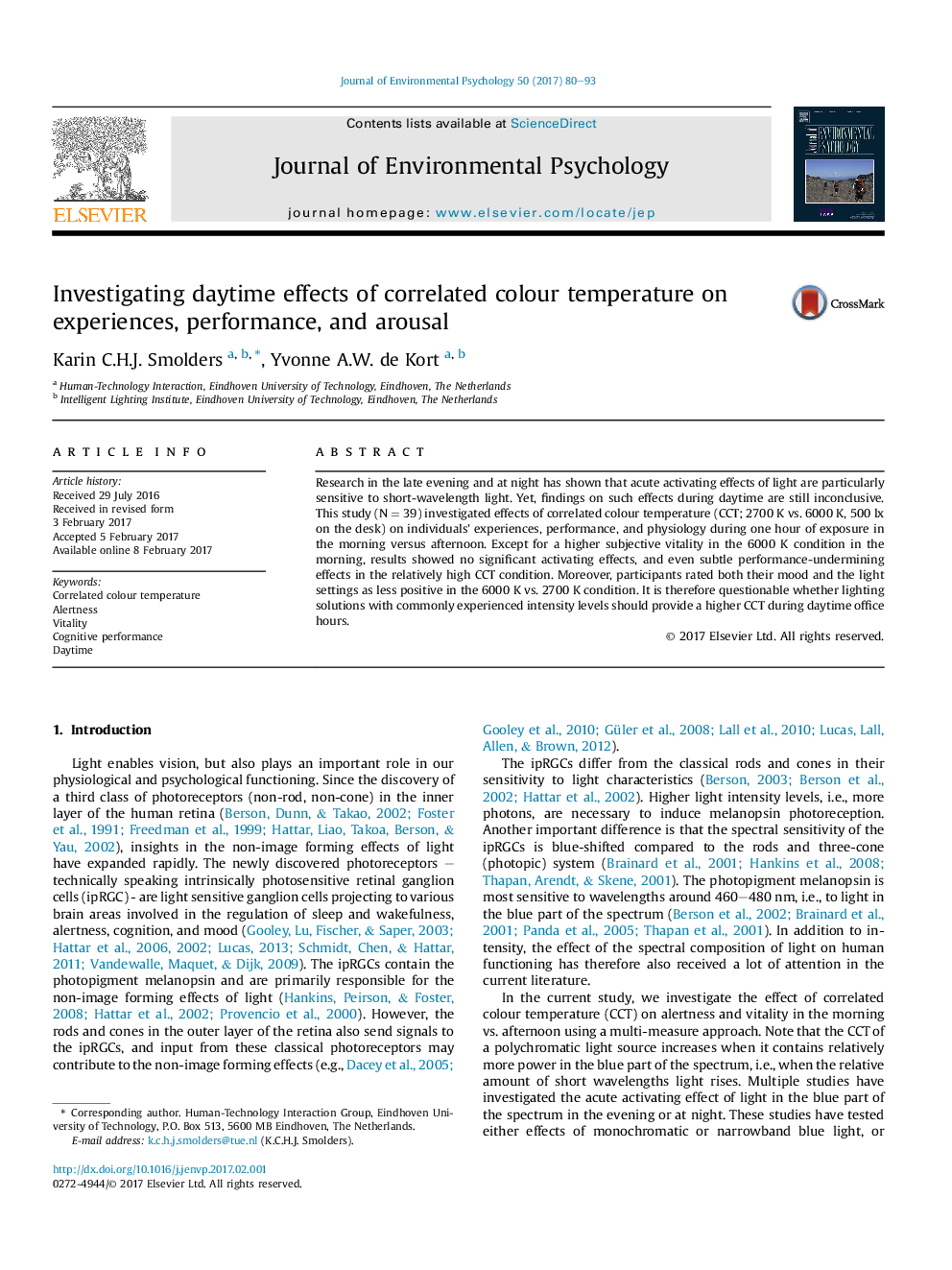| Article ID | Journal | Published Year | Pages | File Type |
|---|---|---|---|---|
| 5034930 | Journal of Environmental Psychology | 2017 | 14 Pages |
â¢We tested acute activating effects of correlated colour temperature (2700 vs. 6000 K).â¢Effects were investigated for morning versus afternoon exposure.â¢Results showed no support for exposure to a higher CCT during daytime working hours.â¢Nocturnal effects of spectrum cannot directly be translated to daytime situations.â¢More research is needed to determine the optimal spectrum for lighting solutions.
Research in the late evening and at night has shown that acute activating effects of light are particularly sensitive to short-wavelength light. Yet, findings on such effects during daytime are still inconclusive. This study (NÂ =Â 39) investigated effects of correlated colour temperature (CCT; 2700Â K vs. 6000 K, 500 lx on the desk) on individuals' experiences, performance, and physiology during one hour of exposure in the morning versus afternoon. Except for a higher subjective vitality in the 6000Â K condition in the morning, results showed no significant activating effects, and even subtle performance-undermining effects in the relatively high CCT condition. Moreover, participants rated both their mood and the light settings as less positive in the 6000Â K vs. 2700 K condition. It is therefore questionable whether lighting solutions with commonly experienced intensity levels should provide a higher CCT during daytime office hours.
